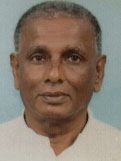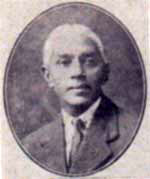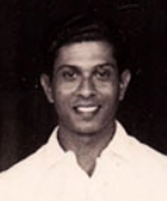Related Research Articles

The Sri Lanka men's national cricket team, nicknamed The Lions, represents Sri Lanka in men's international cricket. It is a full Member of the International Cricket Council (ICC) with Test, One-Day International (ODI) and T20 International (T20I) status. The team first played international cricket in 1926–27 and became an associate member of the ICC in 1965. They were awarded the Test status in 1981, which made Sri Lanka the eighth Test cricket-playing nation. The team is administered by Sri Lanka Cricket.
Sri Lanka Cricket (SLC) is the governing body for cricket in Sri Lanka. It was first registered with the Sri Lankan Ministry of Sports as the Board of Control for Cricket in Sri Lanka on 30 June 1975 as a national sports body. The board was renamed in 2003.
Pakiasothy Saravanamuttu StadiumColombo Oval or P. Sara or simply PSS is a multi-purpose stadium in Colombo, Sri Lanka. It is currently used mostly for cricket matches. The stadium holds 15,000 and hosted its first Test match in 1982. It is named after Paikiasothy Saravanamuttu, a former civil servant and first President of the Board of Control for Cricket. The venue is the home ground of the Tamil Union Cricket and Athletic Club. The P.Sara Oval hosts one Test match per year in Sri Lanka's summer Test calendar, but lost out to Pallekele International Cricket Stadium in 2011 to host Sri Lanka v Australia Tests.
Michael Hugh Tissera is a former Sri Lankan cricketer who played in the 1975 Cricket World Cup.
Mahawaduge Dilruwan Kamalaneth Perera is a former Sri Lankan international cricketer, who played for Sri Lanka in all formats of the game. He plays domestically for the Colts Cricket Club. Perera is a right-arm offbreak bowler and right-handed batsman. Started as an opening batsman, Perera is the quickest Sri Lankan bowler to reach both 50 and 100 Test wickets in Sri Lanka. Dilruwan is a past student of Sri Sumangala College.
International cricket teams raised by Marylebone Cricket Club (MCC) have visited Sri Lanka, formerly Ceylon, on 23 occasions from 1911-12 until the most recent tour in the winter of 2000-01. Eleven of the teams were England national cricket teams raised by MCC during the period when it held responsibility for Test cricket played by England. The other twelve were MCC teams per se which did not take part in Test cricket.
The M. J. Gopalan Trophy was an annual first-class cricket competition played between Ceylon and Madras between 1952–53 and 2007–08.

Clive Clay Inman was a Sri Lankan cricketer who played first-class cricket for Ceylon from 1956 to 1966 and for Leicestershire from 1961 to 1971.
Dr Churchill Hector Gunasekara was a Ceylonese first-class cricketer. He was the first person from his country to play for an English county, representing Middlesex from 1919 to 1922. He was widely regarded as the best fielder in county cricket at the time.
The Indian national cricket team toured Ceylon in November 1956 and played two internationals against Ceylon. As Ceylon had not then achieved Test status, the internationals are classified as first-class matches. Both games were played at the Paikiasothy Saravanamuttu Stadium in Colombo and ended as draws.
Dandeniya Premachandra de Silva is a former Ceylonese cricketer. He was a middle order batsman who represented Ceylon in first-class cricket from 1962 to 1968.
The Pakistan national cricket team toured Ceylon from mid-March to mid-April 1949 and played four matches including two internationals against the Ceylon national team. As neither country had yet achieved Test status, the internationals are classified as first-class matches. Both games were played at the Paikiasothy Saravanamuttu Stadium in Colombo and Pakistan won them both: the first by an innings and 192 runs; the second by 10 wickets. These two matches were the first four-day internationals played in Ceylon. Pakistan were captained by Mohammed Saeed and Ceylon by Derrick de Saram.

Charles Edward Manoharan "Mano" Ponniah is a Sri Lankan architect and engineer who played first-class cricket in Sri Lanka and England from 1964 to 1969.
Herbert Innocent Kingsley Fernando is a former cricketer who was Ceylon's principal wicket-keeper from 1953 to 1970. He was also a doctor and a brigadier in the Sri Lanka Army.
Anurudda "Anura" Polonowita is a former cricketer who played for Ceylon from 1960 to 1969. He later became a prominent cricket administrator and groundsman. In September 2018, he was one of 49 former Sri Lankan cricketers felicitated by Sri Lanka Cricket, to honour them for their services before Sri Lanka became a full member of the International Cricket Council (ICC).
Dhansiri Weerasinghe was a cricketer who played 12 matches of first-class cricket for Ceylon between 1958 and 1969.
The Ceylon cricket team toured India in December 1932 and January 1933. Ceylon did not then have Test status, but two three-day unofficial Tests were played, both of which were drawn. The tour also included four other first-class matches and four minor matches. It was the first tour abroad by a Ceylonese team. The victories against Patiala and Central Provinces and Berar were Ceylon's first victories in first-class matches.
Edward George Samuel Kelaart was a Ceylonese cricketer who played first-class cricket between 1926 and 1935. He was Ceylon's first international captain, leading the side in two matches against India in 1932-33.

Lieutenant Colonel Dr John Rajathurai Rockwood, VD was the leading administrator and patron of cricket in Ceylon from 1914 to 1935. He helped put the nation's cricket administration in the hands of the Ceylonese, and served as president of the Ceylon Cricket Association from its formation in 1922 until 1933. A doctor, he was also a commanding officer of the Ceylon Medical Corps.

Lucien Edward de Zoysa was a Ceylonese cricketer who played first-class cricket between 1947 and 1954. He became a stage actor, playwright, author, and cricket commentator on radio.
References
- ↑ Bowen, p. 271.
- 1 2 Morgan, p. 205.
- ↑ Perera, Ajith C. S. (2 November 2003). "A Peep into Sri Lankan Cricket History". Thinking Cricket with Ajith C. S. Perera. Archived from the original on 12 October 2008. Retrieved 20 October 2017.
- ↑ Harte, p. 128.
- 1 2 3 Morgan, p. 206.
- 1 2 3 "Tournaments in Sri Lanka". CricketArchive. Retrieved 20 October 2017.
- ↑ Ramaswami, p. 6.
- ↑ "Ceylon v MCC 1911-12". CricketArchive. Retrieved 26 January 2023.
- ↑ "New South Wales in Ceylon 1913/14". CricketArchive. Retrieved 31 December 2017.
- ↑ "Sir J Cahn's XI in Ceylon and Malaya 1936/37". CricketArchive. Retrieved 26 January 2023.
- ↑ "Dr J. Rockwood's Ceylon XI v W. E. Lucas' Bombay XI". CricketArchive. Retrieved 20 October 2017.
- 1 2 Morgan, p. 207.
- ↑ "Ceylon v Marylebone Cricket Club". CricketArchive. Retrieved 20 October 2017.
- ↑ Marikar, Hafiz. "Cricket in Sri Lanka during the good old days". Daily News. Retrieved 20 October 2017.
- ↑ "Ceylon in India 1932–33". CricketArchive. Retrieved 20 October 2017.
- ↑ "Ceylon v India, 1945". CricketArchive. Retrieved 21 October 2017.
- ↑ "Ceylon v India, 1956 (1st international)". CricketArchive. Retrieved 21 October 2017.
- ↑ "Ceylon v India, 1956 (2nd international)". CricketArchive. Retrieved 21 October 2017.
- ↑ Nirgunan, Tiruchelvam (14 August 2013). "When the Lankans won a 'Test' in India". Cricinfo. Retrieved 31 December 2017.
- 1 2 3 S. S. Perera, The Janashakthi Book of Sri Lanka Cricket (1832–1996), Janashakthi Insurance, Colombo, 1999, pp. 320–26.
- ↑ Wisden 1968, p. 1069.
- ↑ Schaffter, Chandra (1 June 2018). "True story of 1968 England tour". The Island. Retrieved 25 October 2019.
- ↑ Wisden 1975, pp. 972.
- ↑ "Sri Lanka v West Indies, 1975 Cricket World Cup". CricketArchive. Retrieved 20 October 2017.
- ↑ "Australia v Sri Lanka, 1975 Cricket World Cup". CricketArchive. Retrieved 20 October 2017.
- ↑ Morgan, p. 208.
- ↑ "Sri Lanka v England, 1982". CricketArchive. Retrieved 20 October 2017.
- ↑ "Test matches – most wickets in career". ESPNcricinfo. Retrieved 20 October 2017.
- ↑ "Sri Lankan domestic cricket – a brief history". ESPNcricinfo. Retrieved 20 October 2017.